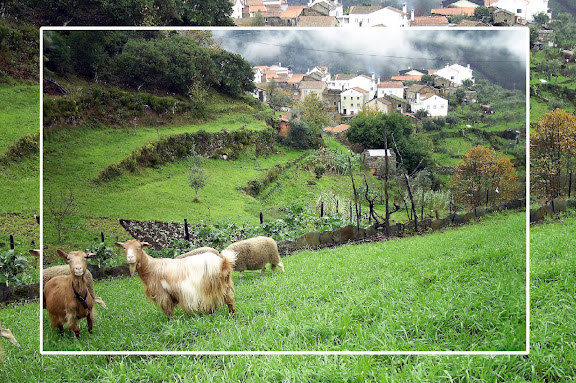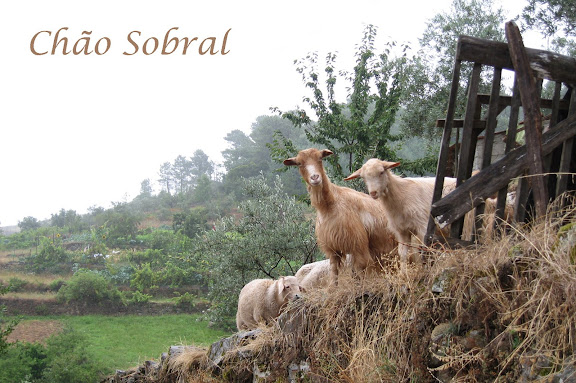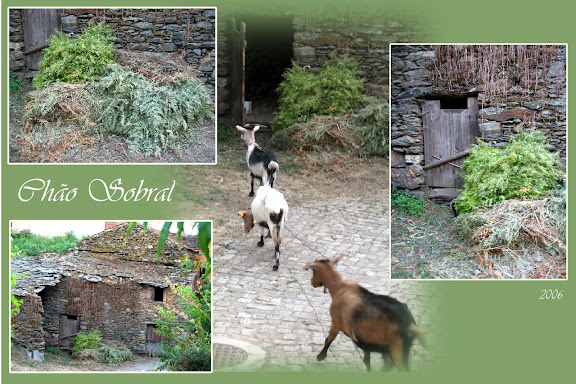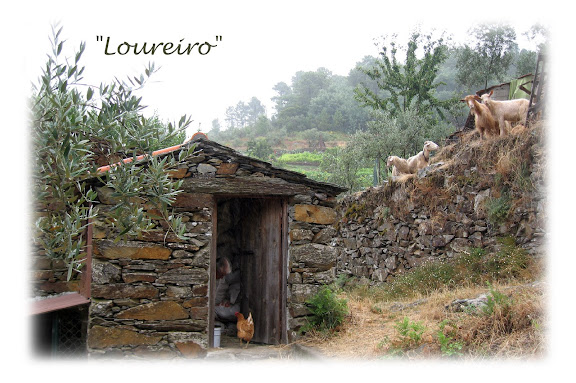


|
Commenced:
|
01/07/2012 |
|---|---|
|
Submitted:
|
09/08/2012 |
|
Last updated:
|
15/01/2018 |
|
Location:
|
Chão Sobral, Aldeia das Dez - OHP - Coimbra, PT |
|
Climate zone:
|
Warm Temperate |
(projects i'm involved in)
Back to Mountain Steep Permaculture - Permacultura em Declive de Montanha
Project: Mountain Steep Permaculture - Permacultura em Declive de Montanha
Posted by João Gonçalves about 12 years ago
Pic. 1 - Long haired goats at home, compost starters.
Humans work with goats to sustain themselves and our shared (goat)culture in the mountain, of which they are a intrinsic member.
Because we don't have other way of taking care of them outside (our terraces mosaic patches are not properly fenced), most of the time they are kept in their warm home, as if in a rock cliff cave...
They trample fresh biomass (this biomass is fresh cut plants-food that they don't eat completely) that is added every day, they pee and poo on it. A compost pile builds up in the proccess, reaching more than 1 meter inside the shed. It does not smell, but it keeps a gentle warmth. This is because high carbon content coppiced shrubs are added / Erica and Genista spp mostly, and sometimes Cystus and Cytisus-Broom.
As we live in a rather "brittle" environment (uneven distribution of humidity throughtout the year - dry summer and wet winter - see Holistic Management) goats function as "humidifiers", bio-digestors, so that the annually grown biomass needed for fertilization and building of soil on soil depleted steep rocky slopes, to be used on mountain terraces, thus proccessed in the gut and enriched biologically under their feet, nutrient and mineral cycle can occur, and along carbon will undergo its final cycling in the growing of annual crops.
Where in non-brittle environments (failry even distribution of humidity throughout the year) one might follow "CHOP AND DROP" / droping prunings on the soil to feed fungae and build humus in "food forest", here the tradition is pretty much "CHOP AND GOAT".
As mentioned in previous post, ( http://permacultureglobal.org/posts/2706 ) the complete decomposition of this trampled and manured biomass happens to occur under the tilled soil (manual tillage or with small tractors) . Creating a sponge that holds Spring time rain water and summer "once a week" flood irrigation.
Goats also eat everyday some hay or dry corn stalks. All food is obtained/stored/collected locally by the keepers. No food is bought. They eat kitchen scraps, vegetables and peels, dry bean pods, early fallen fruit, prunings-tree branches (Arbutus unedo, chestnut, olive, silver birch, budleia, etc).
Through Autumn and Winter, when is not raining they graze outside for a few hours on meadows or on rye patches sown just after first Autumn rains. They do this everytime in a different spot, so that rye has always time grow back. Such that over Autumn and Winter rye patches are grazed many times never becoming overgrazed.
They are milked every day. Milk is used mostly to make cheese for home comsumption and some for special local traditional produce markets (3 or 4 markets per year), or via direct relational marketing/sale.
Some people take them to the mountain everyday to browse on more than those same species that are cut and brought to them everyday.
Older goats and younger ones are butchered every year, and the meat is eaten during feast days when relatives and family come together during holy-days, specially for Easter and the Village Patron Saint Summer Feast.
Pic. 2 - Three goats in the old shed, whose 2 walls are built with dry stone only, and is partly embeded in the rocky slope. The goat at the back stands on this mother rock nearly vertical slope. Mimics the goat cave on the cracks of rocky cliffs, reminds me of Mallorca mountains (Spain) "wild goats" hiding on this type of natural shelters.
Beautiful goats pictures below by Irene do Couto and João, graphic work by Irene.
More pictures of Chao Sobral by Irene
https://picasaweb.google.com/106810385990020114004/2011ChaoSobralJulhoAgosto#




You must be logged in to comment.
Note: The various badges displayed in people profiles are largely honesty-based self-proclamations by the individuals themselves. There are reporting functions users can use if they know of blatant misrepresentation (for both people and projects). Legitimacy, competency and reputation for all people and projects can be evidenced and/or developed through their providing regular updates on permaculture work they’re involved in, before/after photographs, etc. A spirit of objective nurturing of both people and projects through knowledge/encouragement/inspiration/resource sharing is the aim of the Worldwide Permaculture Network.
 |
MemberA member is a permaculturist who has never taken a PDC course. These cannot become PDC teachers. Members may be novice or highly experienced permaculturists or anywhere in between. Watch their updates for evaluation. |
|---|---|
  |
Permaculture MatchmakerOne of these badges will show if you select your gender and the "I'm single, looking for a permaculture partner" option in your profile. |
 |
PDCPeople who claim to have taken a Permaculture Design Certificate (PDC) course somewhere in the world. |
 |
PDC VerifiedPeople who have entered an email address for the teacher of their PDC course, and have had their PDC status verified by that teacher. Watch their updates for evaluation. |
 |
PRI PDCPeople who’ve taken a Permaculture Research Institute PDC somewhere in the world. |
 |
PDC TeacherPeople who claim to teach some version of PDC somewhere in the world. |
 |
PRI TeacherWith the exception of the ‘Member’ who has never taken a PDC, all of the above can apply to become a PRI PDC Teacher. PRI PDC Teachers are those who the PRI recognise, through a vetting board, as determined and competent to teach the full 72-hour course as developed by Permaculture founder Bill Mollison – covering all the topics of The Designers’ Manual as well as possible (i.e. not cherry picking only aspects the teacher feels most interested or competent in). Such teachers also commit to focussing on the design science, and not including subjective spiritual/metaphysical elements. The reason these items are not included in the PDC curriculum is because they are “belief” based. Permaculture Design education concerns itself with teaching good design based on strategies and techniques which are scientifically provable. PRI PDC Teachers may be given teaching and/or consultancy offerings as they become available as the network grows. |
 |
Aid WorkerThe individual with this badge is indicating they are, have, or would like to be involved in permaculture aid work. As such, the individual may or may not have permaculture aid worker experience. Watch their updates for evaluation. |
 |
ConsultantThe individual with this badge is indicating they are, have, or would like to do paid permaculture design consultancy work. As such, the individual may or may not have permaculture consultancy experience. Watch their updates for evaluation. |
 |
Community ProjectCommunity projects are projects that help develop sustainable community interaction and increase localised resiliency. |